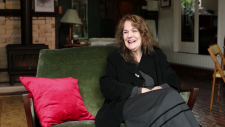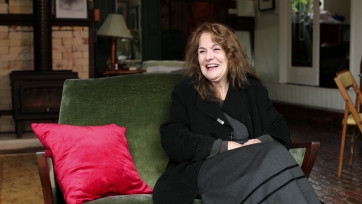- I remember when I was very young and still a teenager and doing some work in a darkroom. It was really the first time time disappeared for me. You know, I was so excited about doing it. I think that you have to regard it as a collaboration. Even people who are really well known and photographed all the time feel a bit vulnerable. It's incredibly easy to take a horrible picture of somebody where they look really tense and they don't look like themselves. So I guess I'm interested in people being comfortable.
I don't have any format. I don't have a particular way they have to sit or what is their background. I really have to push it a bit to include a bit of background or include more of the body because that's interesting, but if I had what I wanted I probably would just have like that, you know. Because the eyes are obviously necessary. I'm interested in the eyes, try to get some sort of straight gaze, where at least you have the impression that you're contacting the essence of that person. There was a phrase that I quite used to like, which is Buddha nature, which means you know like that in you which doesn't change. You can take pictures of quite small children, and you know that there's something in that photograph that if you came back, 50 years later, there would be still the same thing in it. And that's sort of, I guess, what I'm interested in.
I mean one of the guides that I have used, it's something that's only really formed in the last probably 15 years, is the different-sidedness of faces, in that, I would ask people, just as a guide, whether they're left-handed or right-handed. Because people who are right-handed, somehow, look to me, better from that right side. The other side, if people are left-handed they generally look better from the left side. Whatever better means. Most people are asymmetrical. There's some very rare people who are symmetrical, but most of us are really quite different.
Taking photographs is a bit like a temporary infatuation, for me, because, I'm not interested in taking awkward pictures of somebody, so it's a bit like, you know that process when you fall in love with somebody, they do one thing and to that one thing you attach all these qualities, which they don't have. They just do that one thing. But you don't want to show somehow, you don't want to see the bad things at state, you just put all the good things together. I've taken photographs of people where I've looked at them afterwards and I've thought, yes, the person who's in love with him sees him like that.







